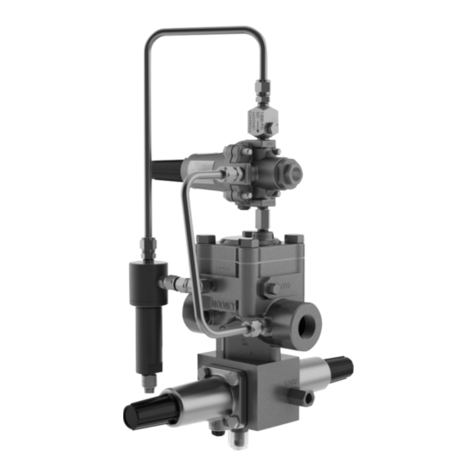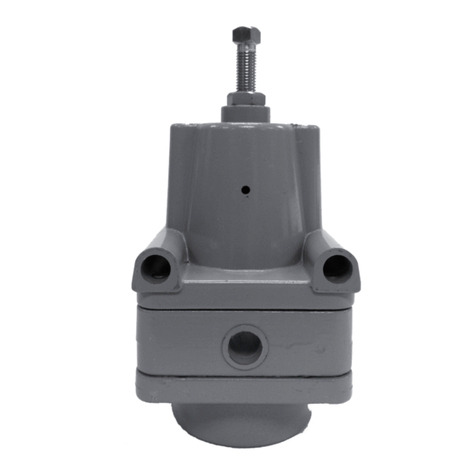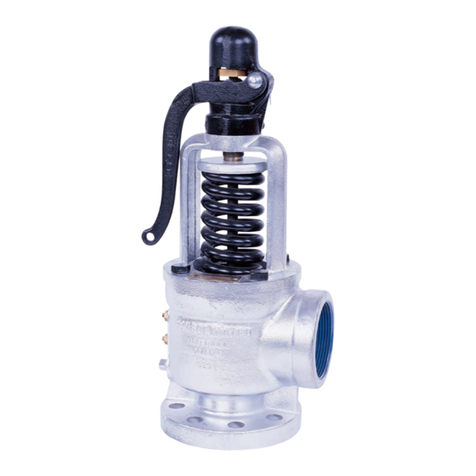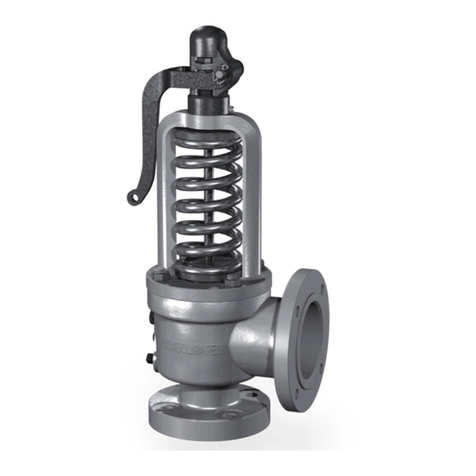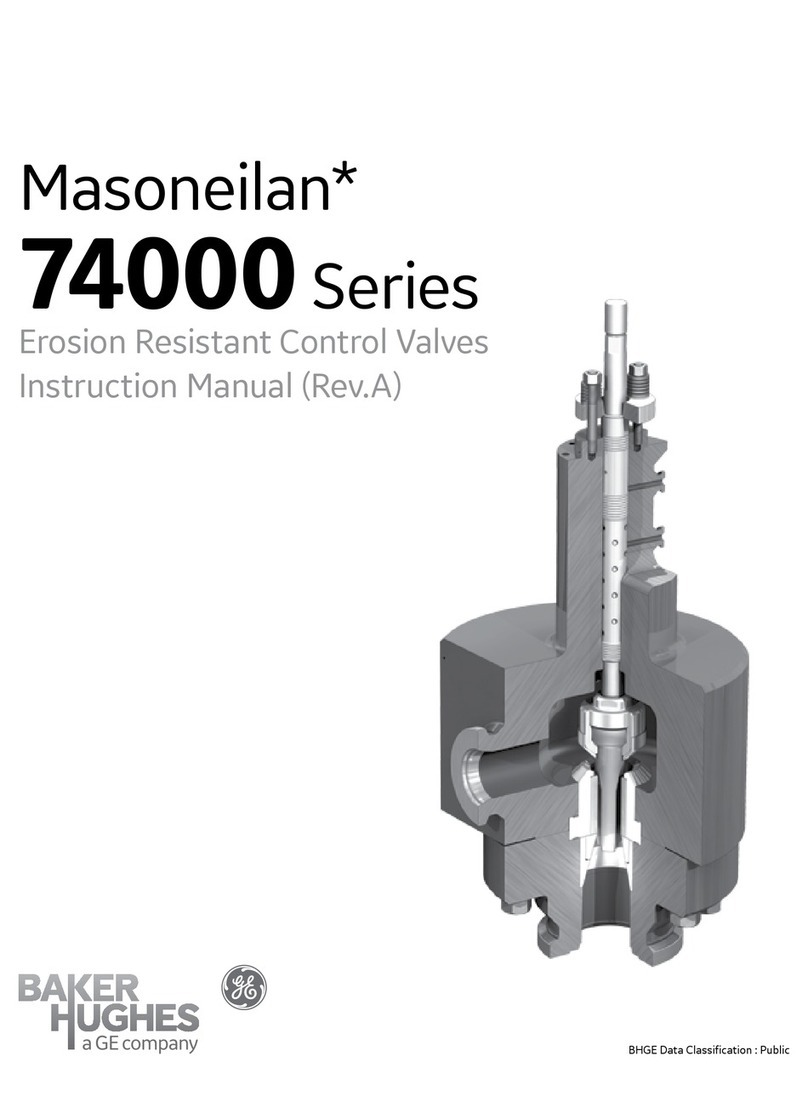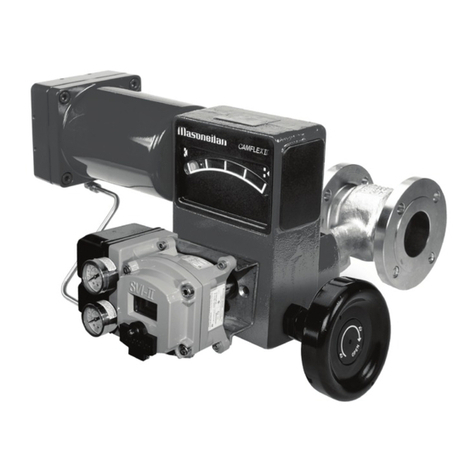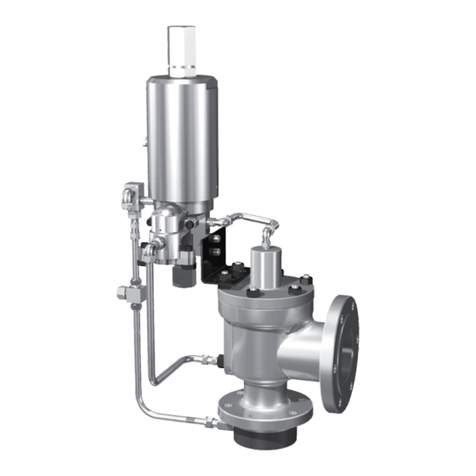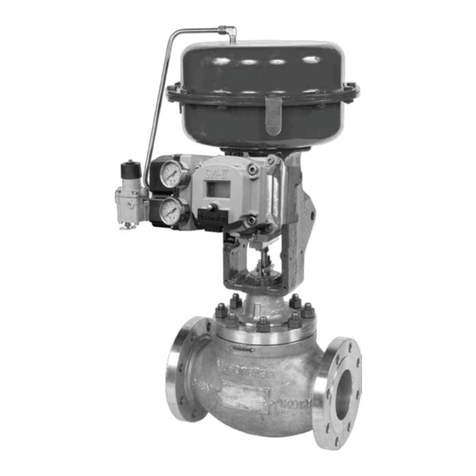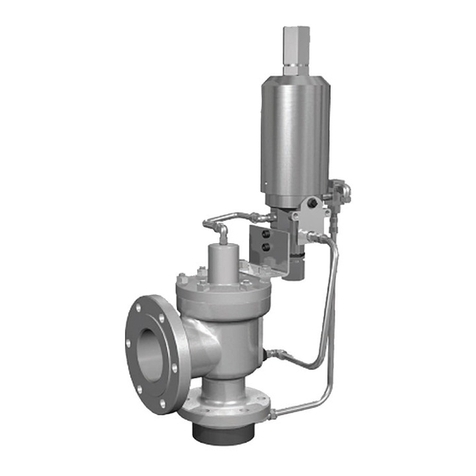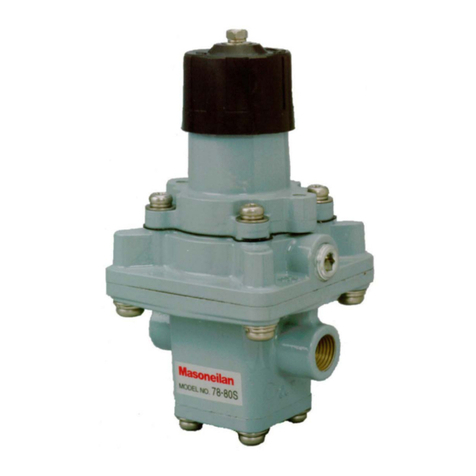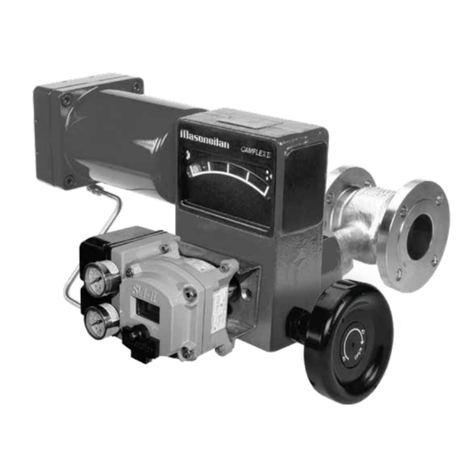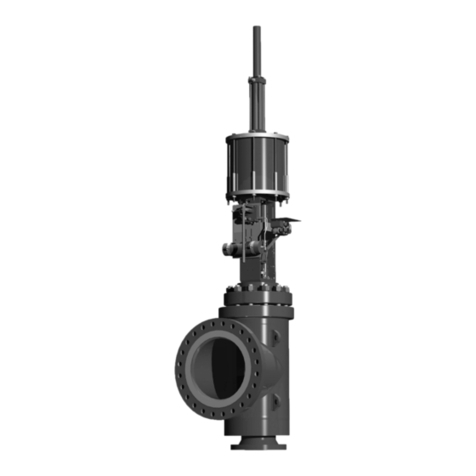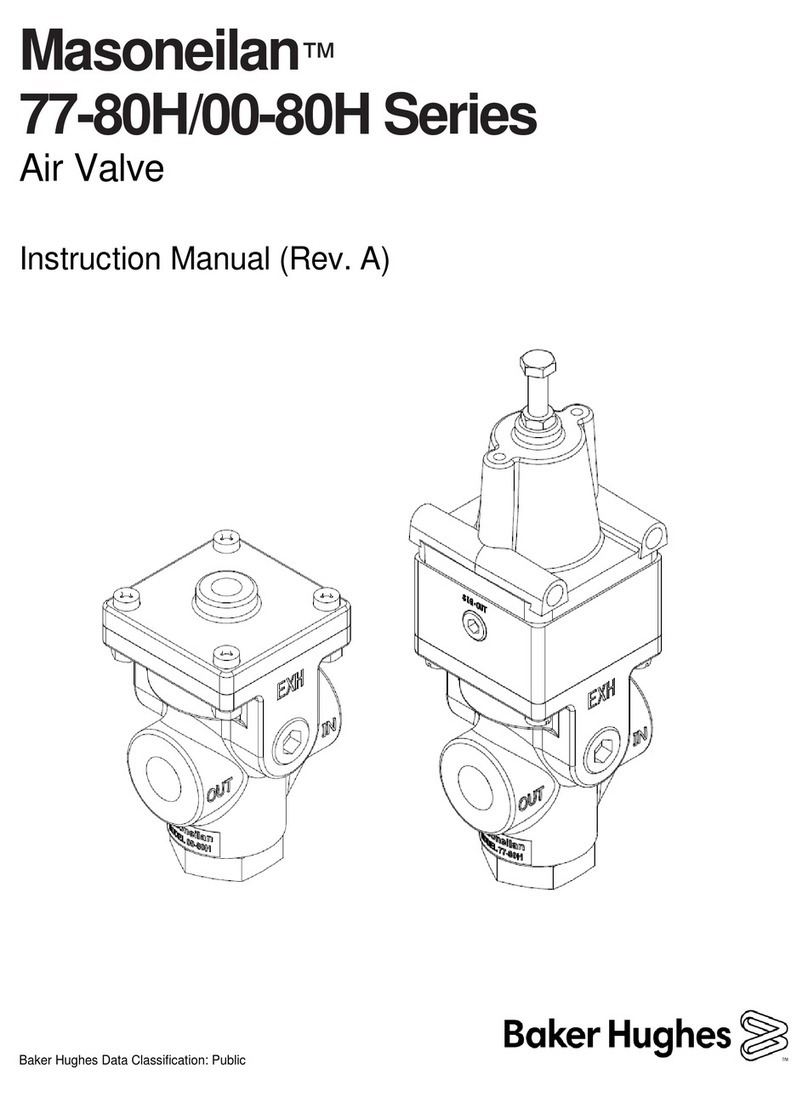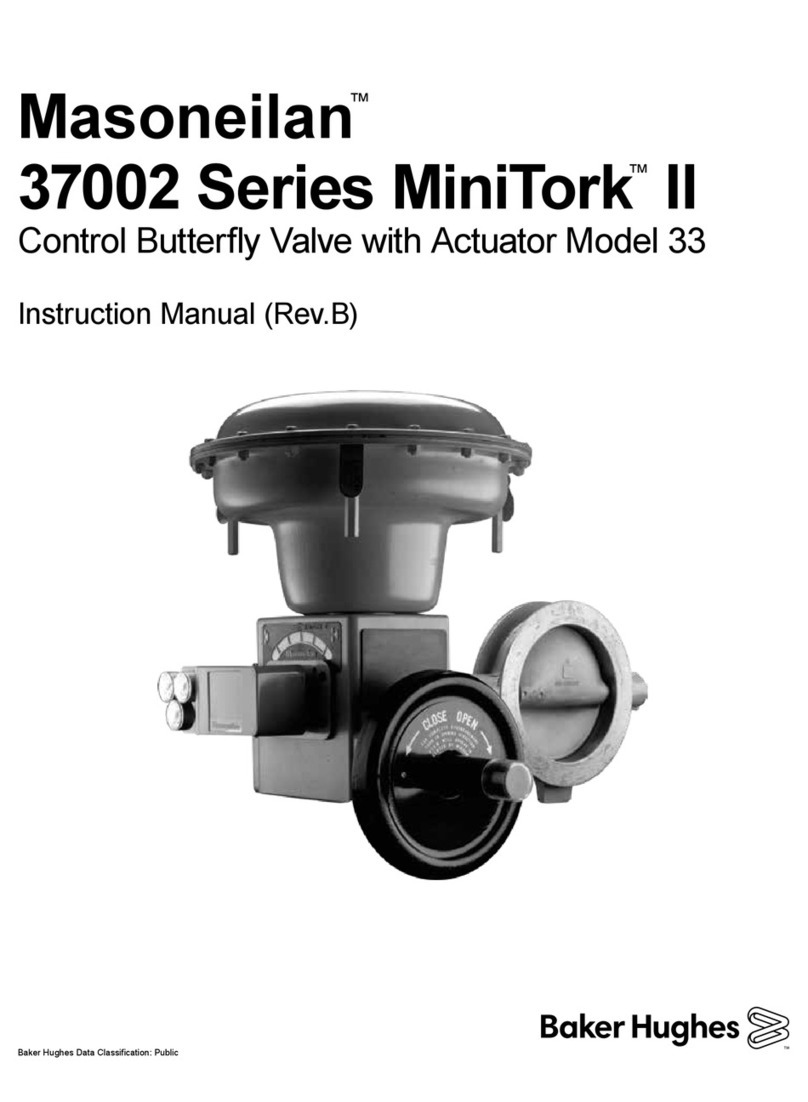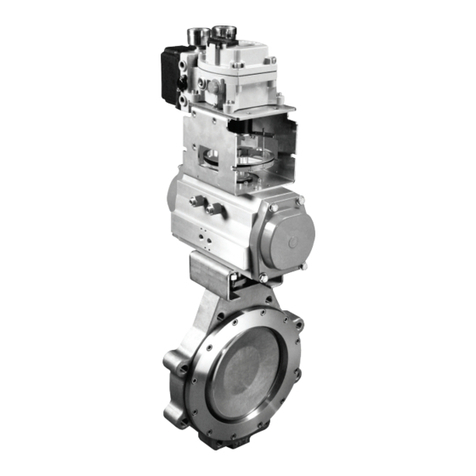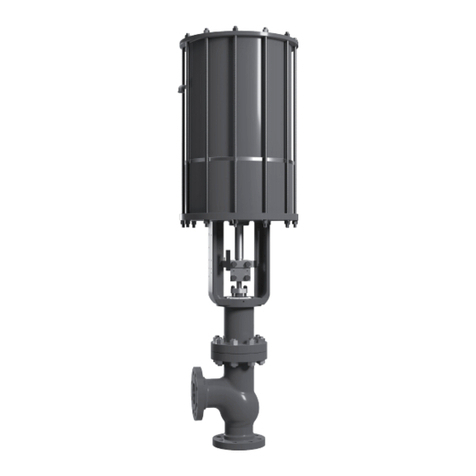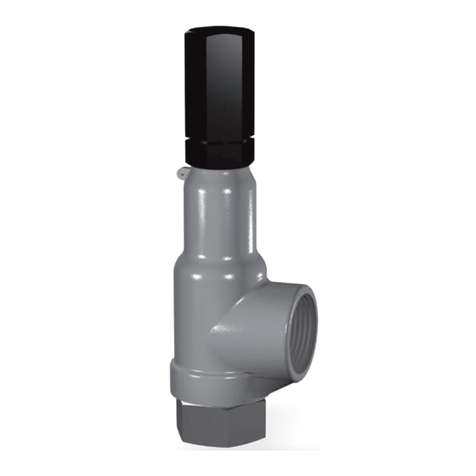
Masoneilan 73000 Series Control Valves Instruction Manual | 3
Copyright 2020 Baker Hughes Company. All rights reserved.
1. Installation
Prior to installing the valve, clean the pipeline of all foreign matter
such as dirt, spatters (welding chips), scale, oil or grease. Install
the valve in the pipeline so that the fluid flows in the direction
indicated by the flow arrows attached to the body, or the fluid
flows from “IN” toward “OUT” marked at the connection point.
When securing the lower flange to the pipeline, press the seat
ring against the body until it touches the flange surface of the
pipeline. The lower flange and the pipeline pinch the seat ring
and the pipeline’s gasket which is prepared in advance, and
tighten the pipeline bolts rigidly.
If the valve is installed in a horizontal position, be sure to take the
support from the yoke or other part of the actuator.
In case of the extension type bonnet, do not apply insulation to
the extended portion.
Provide the required air tubing for the signal pressure and air
supply, and the electrical wiring to the positioner. Make sure no
air leaks from the air pipeline.
2. Maintenance
When the control valve needs to be disassembled for inspection,
cleaning or polishing the valve seat, follow the procedures
described below.
It explains the following procedure as an example of the attached
drawing (MNS-148001).
2.1. Disassembly
Shut off all air supplies, disconnect the tubing for the air supply
and the positioner signal pressure, and the air tubing from the
volume tank.
To disassemble the valve, it must be removed from the piping.
Bring a chain block over the valve to remove it from the piping for
disassembly and reinstall it after reassembly.
1) Run a strong rope through the actuator yoke and remove
the valve retaining bolts from the piping while slightly pulling
the valve upward.
If the valve is installed in a horizontal position, also run a
rope around the body so that no lopsided force is exerted on
the valve, when disconnecting the valve from the pipeline.
2) Seat ring (12) and gasket (11) can be taken apart, after the
valve body is removed from the pipeline. At this time, pay
attention not to be damaged with the seat ring.
3) Remove the positioner linkage from the split clamp (18)
which connects the piston rod (19) of actuator and the plug
(13) of the body side.
4) Loosen the nut (16) or bolt (26) of the split clamp (18) in
order to remove the split clamp (18).
Take the record on the depth of insertion of the stem and the
position of the split clamp so that they can be reassembled
to the same dimension.
5) Remove the seat ring (12) first from the bottom of the body.
The actuator can also be removed by loosening the drive
nut (5) which connects the body (10) and the yoke (14).
However, in case of the stud and nut type connection that
connects the yoke to the body by the stud (23) and nut (24),
loosen the nut (24) to remove the actuator from the body.
Remove the packing flange (3) and the packing follower
(4), after loosening and removing the stud nut (2) which
have tightened the packing flange. In the case of keeping
connecting the valve body and the yoke, the packing flange
can be passed through the space between the bottom end
of the piston rodand the upper end of plug. If the space is
narrow, it can be extended by pushing down the plug or
raising the piston rod by hand-wheel operation.
6) Dismantle the plug (13) from the bottom of the body (10).
Note: The disassembly is completed by dismantling the
packings (6), packing spacer (8), lantern ring (9) and
guide bushing (7).
7) Inspect for any damages to each component parts.
Note: As the assembly procedure for packing box may
vary with the type of valve, please refer to the respective
assembly drawings.
2.2. Polishing the Valve Seat
When the valve seat needs polishing, install the seat ring (12)
and plug (13) from the bottom of the body (10), attaching them
tentatively to the body hand-tight, lightly press the plug (13)
against the seat side from the bottom of the body (10), hold
the plug with a wrench applied to the wrench holder, and polish
the seating surface. Do not polish the seating surface too hard,
otherwise it may be damaged. When polishing the seating
surface, apply a fine-grain, quality abrasive to it. Thoroughly
clean the seating surface prior to reinstallation.
2.3. Reassembly
Reassemble the valve according to the following procedure after
having completed the necessary maintenance.
Please note that new packings and gaskets should be prepared
for re-assembly.
1) Clean all the gasket surfaces of the body and the seat ring.
2) Set the guide bushing (7) toward the packing box bottom of
the body (10).
3) Insert the plug (13) from the bottom of the body (10). Set the
seat ring without the gasket. Stand up the body.
4) Install the packings (6), packing spacer (8), and lantern ring
(9), leaded by the stem of plug (13) and yet the amount of
packings and the order of packings are specified by each
valve. When installing the packings which have the cut
ends, they have to be staggered 120 degrees with respect
to each other.
5) Regarding the installation of the packing follower (4) and
of packing flange (3), follow the reverse of the disassembly
procedure. Refer to the section 3-1 – point 5.
6) Mount the actuator on the body. At this time, follow the
reverse of the disassembly procedure. Refer to the section
3-1 - point 5.
7) Move down the piston until it stops whether by applying air
pressure in the upper part of the actuator piston or by hand-
wheel operation.
8) Couple the piston rod (19) to the plug (13) with the split clamp
(18). When coupling, confirm that the threads of piston rod
and plug are completely engaged with each split clamp. It
will be useful that you were marking before disassembling.
Lightly tighten the nut (16) or bolt (26) of split clamp at the
position being completely engaged.
